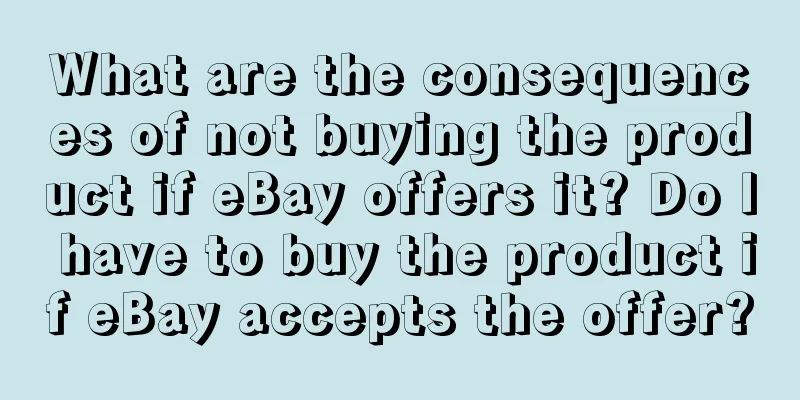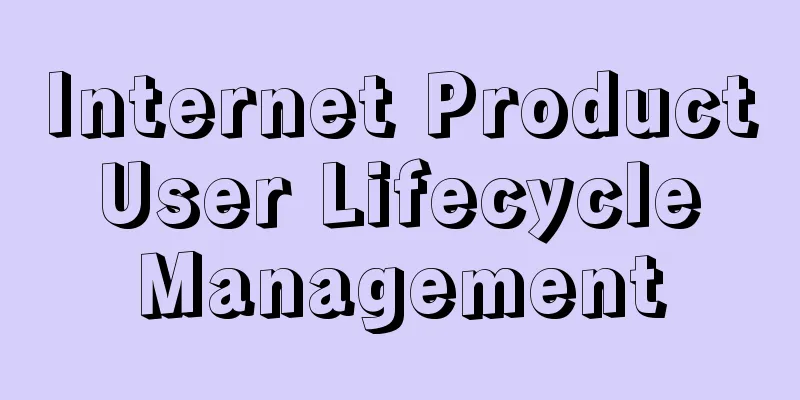AARRR Model (IV) - Increasing Revenue

One sentence definitionHow to Make More Money User performance at this levelActivity exceeds a certain threshold (such as average online time) Operational StrategyStrengthen guidance and incentives for payment for specific users and scenarios Corresponding data monitoring1. Average customer spending: the average amount of goods purchased by each user. Average customer spending = total sales / total number of customers 2. Paying rate (PR or PUR): the ratio of paying users to active users. 3. Average revenue per user (ARPU): The average revenue generated by active users during the statistical period, usually calculated on a monthly basis. 4. Average revenue per paying user (ARPPU): The average revenue generated by paying users during the statistical period (excluding non-paying users). Usually calculated on a monthly basis. ARPPU = total revenue / number of paying users 5. Lifetime Value (LTV, Lift Time Value): The total revenue generated by a user during his or her lifetime. It can be regarded as a long-term accumulated ARPU. 6. Repurchase rate: the number of users who consume more than twice within a certain period of time / the total number of purchasing users. 7. Sales = Number of users * Conversion rate * Average order value * Purchase frequency (Purchase frequency refers to the number of times a consumer or user purchases a certain type of product or category within a certain period of time.) IntroductionThe ultimate goal of acquiring, activating and retaining customers is of course to gain revenue from them and gradually increase the revenue brought by each user, that is, to increase the user's lifetime value. Different companies have different business models, and the basic approaches to improving customer lifetime value are also different. In the current market environment, commercial profits can often be obtained in two ways: one is to monetize products and services, and the other is to monetize traffic. The business models of Internet products include: e-commerce, games, value-added services, advertising, content payment, etc. What the monetization team needs to do is to mark all possible opportunities to profit from users in the entire process from customer acquisition to retention on the roadmap. At the same time, it is also necessary to find all the links in the user journey that hinder revenue generation, such as friction in the payment process. After determining the important links in the basic roadmap, the next step is to analyze which links bring the highest benefits and which links are pinch points, that is, where potential benefits are lost. Different business models will have different pinch points. User group groupingFirst, we need to establish groups based on the level of revenue generated by users. They can be roughly divided into free users, ordinary paying users, and high-quality paying users. Each different group often has different needs and behaviors, so the way to obtain income from them will naturally be different. The free user group basically does not pay. In layman's terms, they are freeloaders. For such a group, if we want to earn income from them, the most appropriate way is to monetize traffic. In addition, we must learn to utilize the non-monetary value of free users, tap into their productivity and labor, and contribute without paying. The ordinary paying user group has certain consumption behaviors and consumption awareness. For such a group, what we need to explore is how to continuously encourage users to generate consumption behaviors, increase consumption amounts and frequencies, and develop consumption habits, so as to increase commercial profits. The high-quality paying user group is often the top user of the product. They spend a lot of money on the product and are loyal users of the product. The actual value they can get from the amount they pay is often not what they value most. Usually, they value the spiritual enjoyment that the product can bring to them. For such a user group, maintaining the user product experience and post-purchase experience becomes the most important thing. Unique treatment is what this group strives for. In addition to revenue, there are other ways to segment cohorts, which is what we recommend when we discuss cracking retention. Grouping methods should include (but are not limited to): location, age and gender, the type of products customers buy or features they use, the channel through which they were acquired (through Google Ads or referral programs), the type of device they use to access the site or app (desktop or mobile, whether they use Microsoft Windows or Mac), the type of web browser they use, the number of visits to the site or app in a certain period of time, the date of the user's first purchase or first action, etc. Finding the balance between free and paidUsers are so used to using products for free that they are unwilling to pay a penny, which is often the case with online software or apps. Venture capitalist Josh Kopelman calls this pricing dilemma the penny gap, which is the huge difference between using a product for free and paying even a small price in the eyes of users. Therefore, we need to strike a balance between free and paid services. In fact, we need to make our free services attractive to users and make them happy to use them, and make them feel comfortable when we charge. The key to balancing the two is to make users feel that they are getting something for free when the service is free, and feel that they are losing out when the service is paid. Properly configuring and balancing the two makes it easier to make a profit. In fact, sometimes even a low price can cause huge friction, especially for online or digital products, and sometimes it is cheaper to offer a product for free than to acquire paying users. In this case, monetizing free users with advertising or paid add-on features can greatly improve revenue. If your main monetization channels are add-ons and product upgrades, then optimizing your strategy to persuade more free users to upgrade is critical. Fortunately, there are some ready-made strategies to experiment with, one of which is to show free users features that are only available to paid users when they use the product. In other words, it is necessary to first clarify the user's expectations, meet their expectations for free, and charge for experiences that are beyond their expectations. Develop the habit of payingTo cultivate users' payment habits and increase the frequency and number of times they pay, you can use addiction models and incentive strategies . The essence of the addiction model is to develop certain behaviors of users into a habit. What we need to do is to cultivate users' payment habits. The addiction model is divided into four steps: trigger, action, variable rewards, and investment. 1. Trigger, reminding people to take the next stepIn fact, it is to create a scenario for users to make them produce the behavior we want to cultivate. If you want to cultivate a habit in users, first you must let users come into contact with and understand this thing, and then experience it. For example, some video products allow users to try out them for fifteen minutes. Once users are exposed to this product and immersed in it, they may then pay for membership. Also, some answers on Zhihu can only be viewed in the first part. If you want to see all of them, you must purchase a Yanxuan membership. This is the first step in developing a habit. You can also adopt personalized recommendations and use data and algorithms to customize products and features for users, but you must pay attention to certain privacy boundaries and not snoop too much into users' lives, which may cause user disgust. 2. Action, the immediate response of people in anticipation of a rewardTo get people to act, three elements are essential: first, sufficient motivation; second, the ability to complete the behavior; and third, a trigger that prompts people to take action. In the cultivation of payment habits, this stage can be understood as payment behavior. In the payment process, first, the product must meet the needs of users, second, the user must have the purchasing power, and finally, certain incentives must be given to encourage users to pay. Personalized recommendations can be made for products that users need, such as Taobao’s “Guess What You Like” feature. Barriers in the payment process should be reduced as much as possible, such as accepting credit cards or Huabei payments. Appropriate encouragement should also be provided to facilitate payments, such as instant discounts or coupons for first-time payments of various products. 3. Various rewards to meet users’ needs and stimulate their desire to use the productIn the payment habits, it can be understood as additional incentives after the payment behavior is completed, including spiritual incentives or physical incentives. To give some simple examples, spiritual incentives include friends’ praise after buying a piece of clothing, and physical incentives include red envelopes distributed after placing a takeaway order on Meituan. 4. Invest in the product to cultivate repeat customersIn terms of payment habits, our ultimate goal at this stage is to cultivate users' habit of continuous payment. Therefore, even though the user has completed a payment, we still need to guide the user to make the next payment, so as to cultivate the user's payment habits. For example, some merchants on Meituan Takeout will hold an activity where a 5-yuan coupon will be given for every three purchases in the store. The four steps of the addiction model are gradual and help us cultivate users' payment habits. In the process of cultivating users' payment habits, incentive strategies can be used throughout to enhance the effects of each link through positive and negative incentives. Positive motivation is to positively encourage users to develop habitual behaviors, such as the spiritual motivation and material motivation mentioned above. Reverse incentives make users feel that if they miss out, they will lose out. This can motivate users and prompt them to pay even when the demand is not very strong. For example, Tmall Supermarket gives out a card-flipping reward after a purchase, which can turn out super discounted products and make users make a second purchase. This activity is the last link of the addiction model - the investment link, and reverse incentives can be used. Six principles that influence user behavior1. Principle of reciprocityStart by offering some free features, and then expect to upgrade them after users have a successful experience and develop demand for the product. 2. Commitment and consistency principlesGet users to make a small commitment first, then guide them to make larger purchases later, thereby increasing revenue. 3. Social Recognition PrincipleFollowing social norms or doing what others do is the most powerful driver of purchasing behavior. The 7 core elements of effective reviews and testimonials are: credible, relevant, engaging, visible, measurable and specific. 4. Authority principleWe are more willing to believe what experts and authorities say than ordinary people, and even just a slight hint of that authority in language can increase purchasing behavior. 5. Preference principleIf someone we like recommends a product or service, we’ll buy more of it. 6. Scarcity PrincipleWhen we feel like we’re missing out, we’re more likely to take action. Using scarcity as a purchasing tactic is about triggering the user’s fear of missing out. Author: Liuyue Ersan, an Internet operator, wants to bring you the "aha moment" on your road to operational growth. Source: WeChat official account: "Operator's Growth Notes" |
<<: AARRR Model (Part 3) - Improving Retention
>>: [Anti-pit reminder] Precautions for using the AARRR model
Recommend
R Diamond Ring Private Domain Disassembly, the world's number one engagement diamond ring brand, what is so good about its private domain?
In just a few years, DR has become the "world...
How to open a store on Alibaba International Station? What are the conditions for opening a store?
Alibaba International Station is one of the prefer...
Delivering takeout to its “old friends”, is Kuaishou going to “fight to the death” with Douyin and Meituan?
This article deeply analyzes the explosive growth ...
Why are there so few people working on Amazon Japan? What are the Amazon sites?
As the Amazon platform continues to grow, more and...
From Jay Chou's Magic Body to T97's Chong Chong Chong, is it selling coffee or hyping up concepts?
"Do you want coffee? Do you want welfare? Do ...
Less than a year after testing the waters, ByteDance shut down multiple interactive drama businesses
Due to business adjustments, several exploration I...
The second half of Xiaohongshu’s bonus has begun!
Now more and more people are starting to use Xiaoh...
How does Shopee's overseas warehouse in Mexico operate? How does Shopee's overseas warehouse ship goods?
Shopee platform has set up overseas warehouses in ...
What to watch out for on Amazon Black Friday? How to avoid mistakes?
When you open a store on Amazon or shop, you must ...
A ten-year product expert from a large company teaches you: three steps to achieve your annual goals
When your boss suddenly gives you a KPI, how shoul...
How to log out of Facebook? Can I recover after logging out of Facebook?
There may be situations where you want to log out ...
How to complete Shopee newbie tasks? Task introduction
Merchants who have completed store registration on...
How does KFC's Crazy Thursday continue to be so popular?
This article specifically analyzes the reasons why...
How did sports APP medals become the new social currency for young people?
Some time ago, Keep medals sold 500 million, becom...
Is Amazon’s account closure permanent? What happens if your store is closed?
If you do not follow the rules when shopping on Am...









